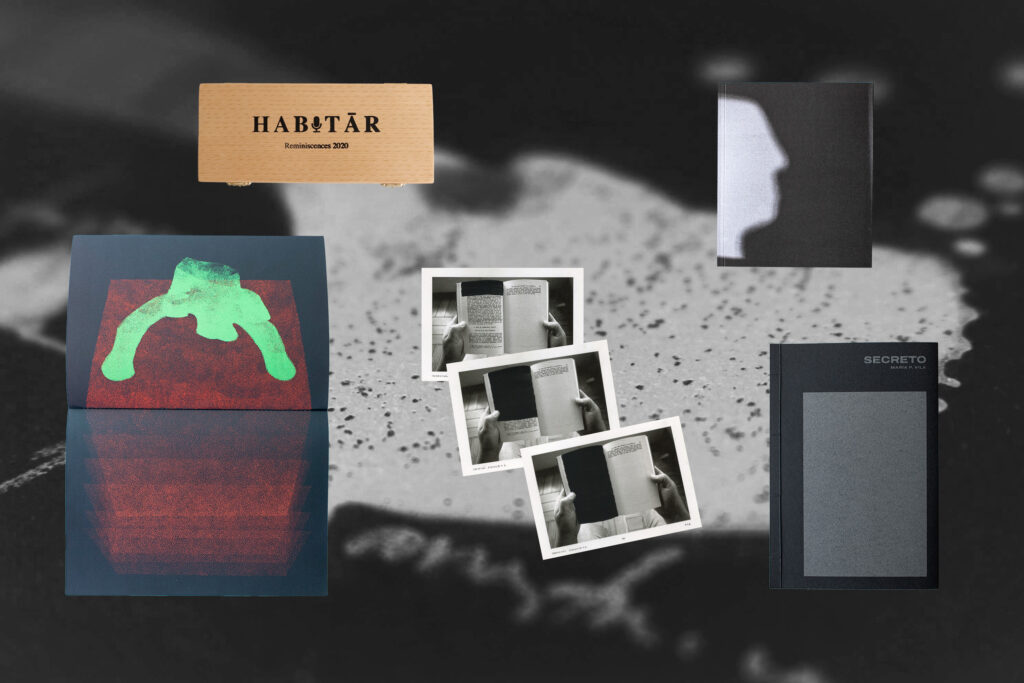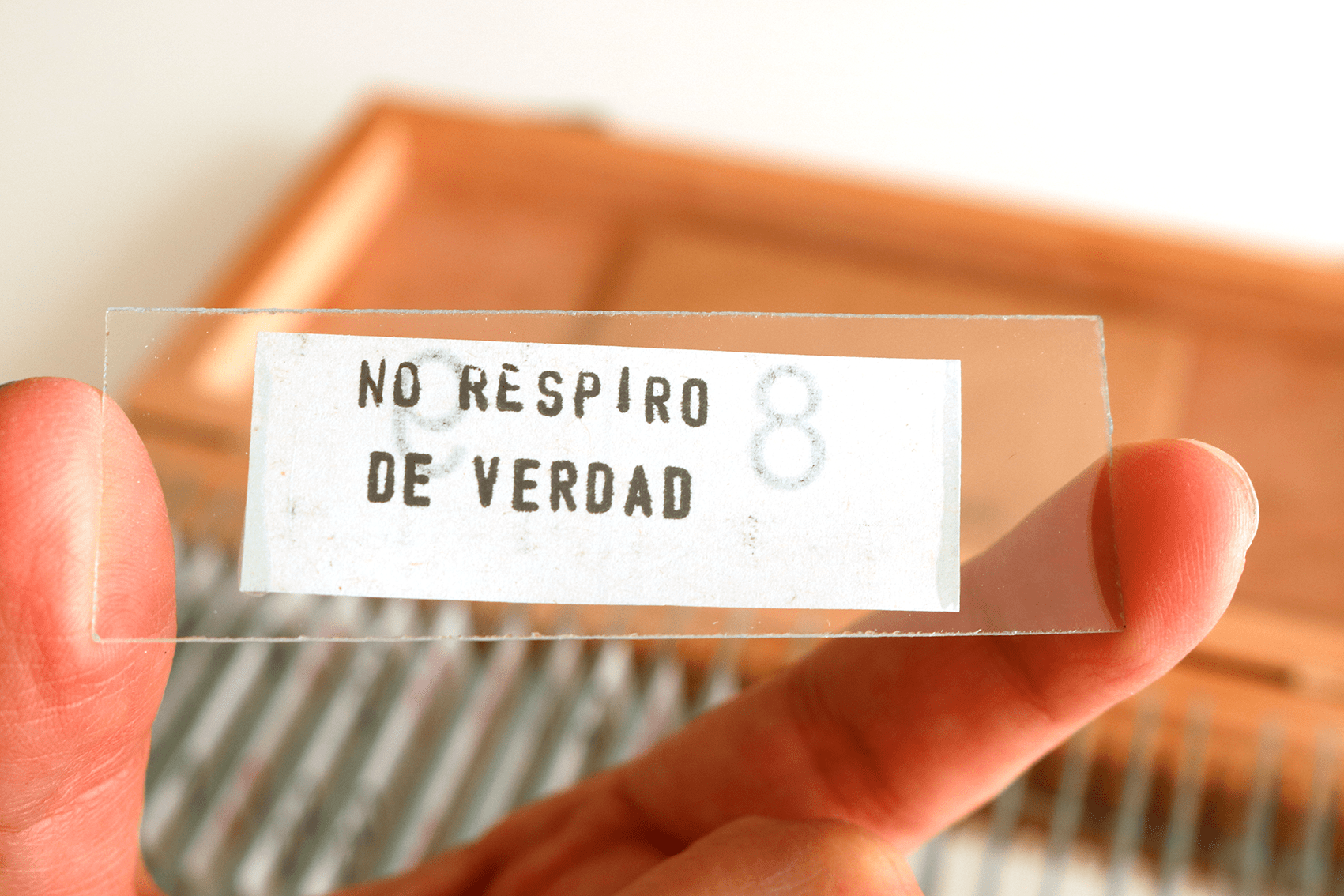When Ulises Carrión mentioned in The New Art of Making Books that “the book is a space-time sequence”, he was referring to the simple idea that reading a book takes time. Going through the sequence (linear or non-linear) of pages implies a delay.
Analyzed from this point of view, a curatorship that addresses “the passage of time” could well contain all the books in the world. However, we want to do an exercise that does not think of time from the point of view of reading, but of time as a concept used explicitly or implicitly in the development of the work.
Here is a selection in which we present some approaches:

- HABITĀR by María P. Vila (Self-publication, 2021)
HABITĀR is a multidisciplinary work (audio – installation – book) that was conceived as a collective display of reflections and emotions around the pandemic.
Developed between Santiago and New York, HABITĀR collected hundreds of testimonies through Whatsapp, which the artist then classified by theme to create a podcast (available on Spotify), from which he extracted fragments that he then stamped onto calendar pages that were glued onto laboratory plates. With the latter, she created an installation of more than 1,000 pieces that she presented at Field Projects Gallery (NY, USA) in July 2021.
This accumulation of textual fragments and voices encapsulated in these fragments of laboratory plates was then divided into 40 parts, resulting in 40 copies of the book: a new space of fragmentation and amplification of this collective experience.
2. El cerebro by Guillermo Deisler (Nouvelles éditions polaires, 1975; Naranja Publicaciones 2022)
El Cerebro (The Brain) is the first Spanish translation of Le Cerveau, a book by Guillermo Deisler originally published in France in 1975 by the poet Julien Blaine’s Nouvelles éditions polaires.
Originally scheduled for publication between 1973 and 1974, this work was postponed due to the coup d’état in Chile, which led to Deisler’s imprisonment and subsequent exile in Europe. These personal circumstances halted the production of the book and greatly altered it, as Deisler added a full chapter on the horrors in Chile after September 11, 1973.
It is interesting to note how the editor, Julien Blaine, intervenes in the sequence of the work by inserting various notes that function as time stamps, reflecting the interruption of the project, the political-historical events that took place in Chile and how they changed Deisler’s life.
3. Arriba del suelo, abajo del suelo by Francisca Sánchez and Magdalena Recordón (Self-publication, 2022)
This publication was launched on the occasion of the solo exhibition Suelo, at the Museo de Artes Visuales (MAVI) in Santiago de Chile in 2021.
From her work exploring the “bottom” of the vanished Aculeo Lagoon in Santiago, the artist uses this soil as a mold to create a series of sculptures that emerge from the depths of the earth and rise to the sky.
The drawing reproduces this process in the space of the book, using its spine as a horizon that separates the underground from what is on the surface. The mold versus the exposed sculpture in its transition from one dimension to another.
4. El fin del ensueño poético by Sebastián Arancibia (Naranja Publicaciones, 2023)
This work belongs to the third part of the trilogy that began with the publication of El ensueño poético, al contrario… (2021), in which the artist reflects on the image of the house and the translation of textuality into photographic image, based on a fragment of The Poetics of Space by the philosopher Gaston Bachelard.
The third part responds to a ritual closure of the research process, composed of a photographic sequence of hands holding an open copy on the used page, erased with black paint. Brushstroke by brushstroke, the artist builds a progressive sequence of 20 intervened photographs.
5. SECRETO by María P. Vila (Naranja Publicaciones, 2022)
Finally, we would like to present a work that contains three different times in the same space.
In SECRETO de María P. Vila, three different moments of the work coexist: the postcards that María Luisa wrote to her mother while collecting secrets through the installation, which was set up in different countries around the world; the editing notes, which represent a process of thinking and editing the book for more than three years; and the selected and revealed secrets, which are the result of the promise made to the participants of the installation and the editing process.
These three times are arranged in the book by their location in three different spaces: the main pages for María Luisa’s postcards to her mother; small paratexts, almost like tweets, that talk about the edition, following a sequence of clockwise movement; and finally, the secrets hidden between the pages, waiting to be revealed.






 No products in the cart.
No products in the cart.